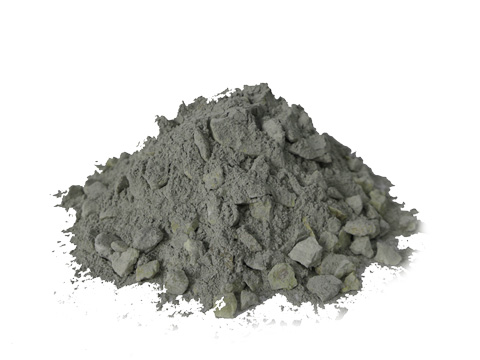The high-aluminum castable is based on the traditional ratio, adjusted the particle gradation, and added different additives to reduce the amount of cement and improve the performance. Improve the medium temperature strength and load softening temperature, reduce the thermal conductivity, and have good thermal stability. High-alumina castables are resistant to penetration, erosion, impact, and abrasion. Good mechanical properties, strong integrity of the furnace body structure, and better air-tightness than brick furnaces. Extend the furnace life, save the cost of repairing the furnace, and have the characteristics of high aluminum castables with significant economic benefits.

The Effect of Adding High Alumina Cement to Refractory Castable
The high alumina cement is added to the refractory castable for binding.
According to the content of alumina, alumina, and calcium oxide in high alumina cement, there are CA-50, CA-70, and CA-80. CA-50 high alumina cement is yellow cement, and its raw materials are bauxite and limestone. CA-70 high-alumina cement has fewer impurities and has better setting characteristics and refractoriness than CA-50 refractory cement. The binder used in the preparation of low cement refractory castables. The aluminum content of CA-80 high-alumina cement is 80%, and it contains α-AL2O3 fine powder, which is used as a binder in high-grade refractory castables. Because CA-70 and CA-80 have high aluminum content in cement, they can improve the weak links of the setting-speed and medium temperature strength of refractory castables. And because of the low calcium content, the later strength of the refractory castable has a longer service life.
The higher the alumina content, the higher the refractoriness; the lower the alumina content, the higher the calcium oxide content. Add high-alumina cement as a binder to demould the refractory castable within 24 hours. High alumina cement will affect the fluidity, construction time, and demoulding time of refractory castables. If used improperly, it will have a great impact on the construction of refractory castables.
The use of high alumina cement is divided into three stages: dissolution, nucleation, and precipitation. For example, CA-50 high alumina cement is generally used in medium and low-grade refractory castables. CA-50 cement has the weakest strength at 800℃. Therefore, if the temperature of the furnace lining is 800℃, it is also the most embarrassing temperature. The temperature is not high, instead of using general refractory castables, low cement castables must be used. Low-cement castables have low calcium content, good strength at medium temperature, and good strength in later use.
CA-70 and CA-80 high-alumina cement have high aluminum content and a low addition ratio. Therefore, it is used in low cement refractory castables, which not only enhances the strength of the refractory castable but also reduces the calcium content of the refractory castable. It can also improve the use of medium temperature strength.
Therefore, adding high-alumina cement to refractory castables not only depends on the combination but also pays attention to the use temperature to determine whether to add CA-50 high-alumina cement or CA-70 and CA-80 high-alumina cement.
Is there a difference between high-alumina castable and high-alumina low-cement castable?
There is a difference between high-aluminum castables and high-alumina low-cement castables.
The high-aluminum castable refractory cement is added in 12%, which is convenient for construction and fast in the early stage, but the calcium content is high, and the later use strength is not as good as the low cement castable. High-aluminum low-cement castable refractory cement is added in 6%, low calcium content, and good strength in later use.
If used for chimney lining, it is better to use high aluminum castable. Because of a large amount of refractory cement added, the chimney lining will encounter the impact of smoke and water mist. Due to a large amount of cement on the surface of high-aluminum castables, the construction speed is fast and the surface is smooth. Therefore, in this case, high-aluminum castables are more suitable.
High-aluminum low-cement castables have a small amount of refractory cement binder added, and a small amount of water added during construction. It is easy to bake and has good strength in later use and high-temperature resistance. In addition, the raw materials and binders of high-alumina and low-cement castables are better than those of general high-alumina castables, and the refractory cement is also relatively different in grades. The price is also relatively higher than that of high-aluminum castables.
High-alumina and low-cement castables are relatively used in high-temperature parts. It has a better effect than high aluminum castable. The material matrix used is also different than the high-aluminum castable. So these two castables are different.
Rongsheng Refractory Material Manufacturer and Sales Factory
Rongsheng is a refractory castable manufacturer with rich production and sales experience. Rongsheng’s advanced environment-friendly and fully automatic unshaped refractory production line have an annual output of tons. If you need to buy high-quality high-aluminum refractory castables and high-alumina low-cement refractory castables, please contact us. We will provide you with refractory products that best suit your production needs according to your specific production needs.

